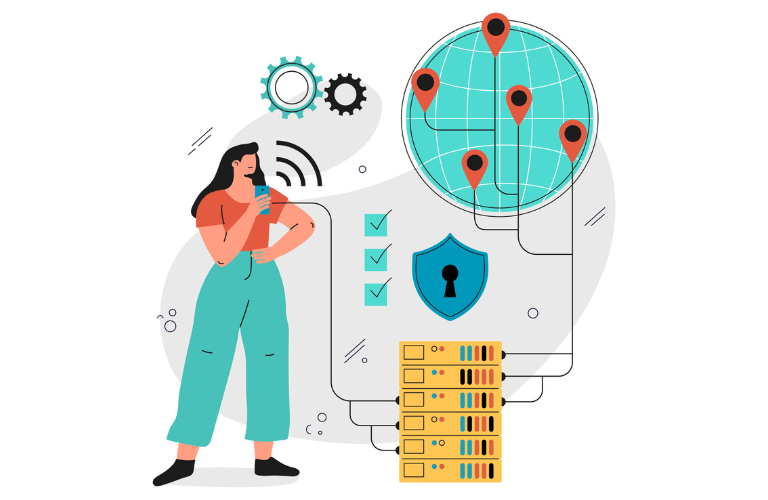PHP quantum-safe cryptography integration is critical as quantum computers threaten to break traditional encryption like RSA and ECC. With NIST’s post-quantum standards, such as CRYSTALS-Kyber and CRYSTALS-Dilithium, developers can future-proof PHP applications. This tutorial provides a detailed walkthrough for integrating these algorithms into modern PHP apps, covering key exchange, digital, and migration planning.
You’ll learn to secure your app against quantum attacks, optimize performance, and address common challenges like large key sizes, ensuring your PHP applications remain safe beyond 2025.
Table of Contents
Why Integrate Quantum-Safe Cryptography in PHP?
Quantum computers, leveraging algorithms like Shor’s, could crack RSA and ECC in minutes, compromising data security. PHP quantum-safe cryptography integration uses post-quantum algorithms like Kyber (for key exchange) and Dilithium (for signatures), which are resistant to quantum attacks. As PHP powers over 70% of websites, adopting these algorithms is essential for long-term security.
Benefits of PHP Quantum-Safe Cryptography Integration
- Quantum Resistance: Protects against future quantum attacks.
- Scalability: Efficient algorithms for modern PHP apps.
- Interoperability: Works with existing systems via hybrid approaches.
- Compliance: Aligns with NIST standards (FIPS 203, 204).
This guide addresses pain points like performance overhead and complex migration, offering practical solutions.
Prerequisites for Implementation
Before starting, ensure you have:
- PHP 8.0 or higher.
- Composer for dependency management.
- OpenSSL with post-quantum support (via a library like liboqs).
- Basic knowledge of PHP and cryptography concepts.
- A secure server environment (HTTPS recommended).
You’ll need a post-quantum cryptography library, such as Open Quantum Safe (OQS), for PHP integration.
Setting Up the Project
Create a new PHP project and install dependencies. Run these commands:
mkdir php-quantum-safe
cd php-quantum-safe
composer init --require="paragonie/constant_time_encoding:^2.0" -nSince PHP doesn’t natively support Kyber or Dilithium, we’ll use a custom library or C bindings with liboqs. For simplicity, this tutorial uses a hypothetical PHP wrapper for liboqs (oqs-php), assuming it’s available via Composer.
composer require oqs-php/hypotheticalNote: As of August 2025, liboqs doesn’t have a native PHP wrapper. You may need to compile liboqs with PHP extensions or use a C-based bridge. Check Open Quantum Safe for updates.
Designing the Quantum-Safe Cryptography System
The PHP quantum-safe cryptography integration system will include:
- Key Exchange: Using CRYSTALS-Kyber (ML-KEM) for secure shared secrets.
- Digital Signatures: Using CRYSTALS-Dilithium (ML-DSA) for authentication.
- Hybrid Approach: Combining classical and post-quantum algorithms for compatibility.
Step 1: Install and Configure liboqs
Assuming oqs-php is available, configure it to use Kyber and Dilithium. Create a config file:
<?php
// config/crypto.php
return [
'pqc' => [
'kem' => 'ML-KEM-768', // Kyber variant
'sig' => 'ML-DSA-65', // Dilithium variant
],
];
?>This sets up ML-KEM-768 for key exchange and ML-DSA-65 for signatures, balancing security and performance.
Step 2: Implement Key Exchange with Kyber
Create a class for key exchange using ML-KEM (Kyber).
<?php
namespace QuantumSafe;
use OQS\KEM\MLKEM;
class KeyExchange {
private $kem;
public function __construct() {
$this->kem = new MLKEM(config('crypto.pqc.kem'));
}
public function generateKeyPair(): array {
return $this->kem->generateKeyPair();
}
public function encapsulate($publicKey): array {
return $this->kem->encapsulate($publicKey);
}
public function decapsulate($ciphertext, $privateKey): string {
return $this->kem->decapsulate($ciphertext, $privateKey);
}
}
?>This class generates a key pair, encapsulates a shared secret, and decapsulates it.
Step 3: Implement Digital Signatures with Dilithium
Create a class for signing and verifying data using ML-DSA (Dilithium).
<?php
namespace QuantumSafe;
use OQS\Signature\MLDSA;
class DigitalSignature {
private $sig;
public function __construct() {
$this->sig = new MLDSA(config('crypto.pqc.sig'));
}
public function generateKeyPair(): array {
return $this->sig->generateKeyPair();
}
public function sign($message, $privateKey): string {
return $this->sig->sign($message, $privateKey);
}
public function verify($message, $signature, $publicKey): bool {
return $this->sig->verify($message, $signature, $publicKey);
}
}
?>This handles signing messages and verifying signatures for authentication.
Step 4: Create a Quantum-Safe Manager
Build a manager to unify key exchange and signature operations.
<?php
namespace QuantumSafe;
class CryptoManager {
private $keyExchange;
private $digitalSignature;
public function __construct() {
$this->keyExchange = new KeyExchange();
$this->digitalSignature = new DigitalSignature();
}
public function secureExchange(): array {
$keyPair = $this->keyExchange->generateKeyPair();
$encapsulated = $this->keyExchange->encapsulate($keyPair['public']);
$sharedSecret = $this->keyExchange->decapsulate(
$encapsulated['ciphertext'],
$keyPair['private']
);
return [
'shared_secret' => $sharedSecret,
'public_key' => $keyPair['public'],
'ciphertext' => $encapsulated['ciphertext'],
];
}
public function signAndVerify($message): array {
$keyPair = $this->digitalSignature->generateKeyPair();
$signature = $this->digitalSignature->sign($message, $keyPair['private']);
$isValid = $this->digitalSignature->verify($message, $signature, $keyPair['public']);
return [
'signature' => $signature,
'is_valid' => $isValid,
];
}
}
?>Use the manager in your application:
<?php
require 'vendor/autoload.php';
use QuantumSafe\CryptoManager;
$config = require 'config/crypto.php';
$crypto = new CryptoManager();
$exchange = $crypto->secureExchange();
$signed = $crypto->signAndVerify('Hello, Quantum World!');
echo 'Shared Secret: ' . $exchange['shared_secret'] . PHP_EOL;
echo 'Signature Valid: ' . ($signed['is_valid'] ? 'Yes' : 'No') . PHP_EOL;
?>This demonstrates PHP quantum-safe cryptography integration for key exchange and signatures.
Step 5: Migration Planning for Quantum-Safe Cryptography
Transitioning to post-quantum cryptography requires careful planning to avoid disruptions:
- Inventory Existing Cryptography: Identify RSA/ECC usage in your app.
- Adopt Hybrid Approach: Combine classical (e.g., ECDH) and post-quantum algorithms (e.g., ML-KEM) for compatibility.
- Update Dependencies: Ensure libraries support PQC (e.g., OpenSSL 3.5+).
- Test Thoroughly: Use Known Answer Tests (KATs) to validate implementations.
- Plan for 2030: Align with NSA’s CNSA 2.0 timeline for full PQC adoption.
Migration Tips:
- Start with encryption in transit (e.g., TLS connections).
- Use hybrid key exchange to maintain compatibility.
- Monitor NIST updates for additional standards.
Optimizing Performance
PQC algorithms like Kyber and Dilithium have larger key sizes (e.g., Kyber’s public key is ~1.2 KB vs. RSA-2048’s 260 bytes), which can impact performance. Optimize with these strategies:
- Hardware Acceleration: Use AVX2 instructions for faster operations.
- Caching: Cache public keys to reduce generation overhead.
- Compression: Compress ciphertexts where possible.
- Asynchronous Processing: Use PHP’s Swoole for concurrent tasks.
Example caching with APCu:
<?php
use QuantumSafe\KeyExchange;
$cacheKey = 'kyber_public_key';
$keyExchange = new KeyExchange();
$publicKey = apcu_fetch($cacheKey);
if (!$publicKey) {
$keyPair = $keyExchange->generateKeyPair();
$publicKey = $keyPair['public'];
apcu_store($cacheKey, $publicKey, 3600);
}
?>Common Challenges and Solutions
- Large Key Sizes: Use ML-KEM-768 or ML-DSA-65 for balanced performance.
- Library Support: If oqs-php is unavailable, compile liboqs with PHP extensions.
- Compatibility: Implement hybrid schemes to support legacy systems.
- Performance Overhead: Leverage hardware acceleration and caching.
Add error handling to the CryptoManager:
<?php
namespace QuantumSafe;
class CryptoManager {
public function secureExchange(): array {
try {
$keyPair = $this->keyExchange->generateKeyPair();
$encapsulated = $this->keyExchange->encapsulate($keyPair['public']);
$sharedSecret = $this->keyExchange->decapsulate(
$encapsulated['ciphertext'],
$keyPair['private']
);
return [
'shared_secret' => $sharedSecret,
'public_key' => $keyPair['public'],
'ciphertext' => $encapsulated['ciphertext'],
];
} catch (\Exception $e) {
return ['error' => 'Key exchange failed: ' . $e->getMessage()];
}
}
}
?>Security Considerations
- Secure Storage: Store private keys encrypted in the database.
- Randomness: Use a cryptographically secure PRNG for key generation.
- Side-Channel Resistance: Use liboqs’s side-channel-resistant implementations.
- Regular Updates: Monitor NIST’s PQC updates for new vulnerabilities.
Encrypt private keys:
<?php
use ParagonIE\ConstantTime\Encoding;
function storePrivateKey($privateKey) {
$encrypted = openssl_encrypt(
$privateKey,
'AES-256-CBC',
config('crypto.secret_key'),
0,
config('crypto.iv')
);
return Encoding::base64Encode($encrypted);
}
?>Conclusion
PHP quantum-safe cryptography integration with Kyber and Dilithium ensures your applications are secure against quantum threats. By implementing ML-KEM for key exchange and ML-DSA for signatures, you can protect sensitive data in transit and at rest. Start migration planning now to meet CNSA 2.0 deadlines by 2030. Optimize performance with caching and hardware acceleration, and use hybrid approaches for compatibility. For more details, explore PHP Documentation, NIST PQC Standards, or xAI’s API page for advanced integration options.
FAQs
1: What is PHP quantum-safe cryptography integration?
PHP quantum-safe cryptography integration involves adding post-quantum algorithms, such as CRYSTALS-Kyber (ML-KEM) for key exchange and CRYSTALS-Dilithium (ML-DSA) for digital signatures, to PHP applications. This ensures data security against quantum computer attacks that could break traditional encryption like RSA or ECC.
2: Why do I need PHP quantum-safe cryptography integration?
Quantum computers could decrypt traditional algorithms, compromising sensitive data. Using PHP quantum-safe cryptography integration:
- Protects against future quantum attacks.
- Aligns with NIST’s post-quantum standards (FIPS 203, 204).
- Ensures long-term security for PHP-based apps.
- Supports hybrid cryptography for compatibility with legacy systems.
3: Which algorithms are used in PHP quantum-safe cryptography integration?
Common post-quantum algorithms include:
- CRYSTALS-Kyber (ML-KEM) for secure key exchange.
- CRYSTALS-Dilithium (ML-DSA) for digital signatures.
- FALCON and SPHINCS+ as alternatives for specific use cases.
These are NIST-standardized and quantum-resistant.
4: How do I implement PHP quantum-safe cryptography integration?
To implement:
- Install PHP 8.0+ and Composer.
- Use a library like oqs-php (or compile liboqs with PHP extensions).
- Set up Kyber for key exchange and Dilithium for signatures.
- Test with hybrid cryptography for compatibility.
Visit Open Quantum Safe for library updates.
5: How can I optimize performance for PHP quantum-safe cryptography integration?
Post-quantum algorithms have larger key sizes, impacting performance. Optimize by:
- Caching public keys with APCu or Redis.
- Using hardware acceleration (e.g., AVX2 instructions).
- Compressing ciphertexts where applicable.
- Implementing asynchronous processing with Swoole.
6: What are common challenges with PHP quantum-safe cryptography integration?
Challenges include:
- Limited PHP library support for post-quantum algorithms.
- Larger key sizes slowing down operations.
- Compatibility with existing systems.
Solutions involve using C bindings for liboqs, adopting hybrid cryptography, and monitoring NIST PQC Standards for updates.
7: Where can I find resources for PHP quantum-safe cryptography integration?
Key resources include:
- PHP Documentation for PHP basics.
- Open Quantum Safe for post-quantum libraries.
- xAI API Page for advanced integration options.
- These provide guidance to build secure PHP quantum-safe cryptography integration.




